Introduction
Applied Behavior Analysis (ABA) therapy is a dynamic and individualized approach to improving social, communication, and learning skills through positive reinforcement. With a focus on enhancing the lives of individuals with autism and ADHD, ABA therapy harnesses the power of data-driven strategies to shape positive behaviors and reduce undesirable ones. This evidence-based therapy offers tailored interventions that adapt to the unique needs of each individual, providing a structured method to address common parenting challenges.
ABA therapy emphasizes a personalized and culturally sensitive approach, reflecting a broader understanding of disability as a social construct. By fostering a supportive environment and empowering parents, ABA therapy stands as a testament to the progress made in understanding and supporting those with autism and related disorders. As the prevalence of autism continues to rise, ABA therapy remains a cornerstone, adapting to the evolving needs of the autism community and ensuring the well-being of individuals.
What is Applied Behavior Analysis?
Applied Behavior Analysis (ABA) operates on the principle that an understanding of behavior can lead to its modification. Focusing on the interplay between behavior and the environment, ABA employs learning theory to improve socially significant behaviors in individuals. It's particularly beneficial for those with autism spectrum disorder, ADHD, and developmental disabilities, offering a tailored, evidence-based approach. ABA's effectiveness is underscored by its data-driven strategies, which are crucial in shaping positive behaviors and reducing undesirable ones.
With diagnoses of ASD now impacting 1 in 36 children, a significant rise from the previously stated 1 in 2,500, the demand for effective interventions like ABA is more urgent than ever. Dr. Jan Blacher, a research professor, emphasizes that our expanding knowledge of autism necessitates flexible intervention approaches given the wide range of abilities and challenges within this population. ABA treatment adapts to these varied needs, providing targeted strategies that can be adjusted as necessary.
The process of ABA treatment often starts with early indications of developmental delays or disorders. Recognizing these early signs enables timely interventions that can significantly alter developmental trajectories. As the diagnostic criteria for a certain developmental disorder have evolved, so too have the approaches to treatment. The DSM-5 outlines the necessity of identifying core features of a developmental disorder in early development, while also acknowledging that symptoms may not fully manifest until later.
ABA treatment provides a beacon of hope, not only for children with autism, but also for their families and the professionals who support them. As they navigate common parenting challenges like communication difficulties, tantrums, and sleep issues, ABA provides a structured method to address these concerns. In addition, the treatment's flexibility and adaptability make it a valuable resource for children with varying degrees of abilities and challenges.
Today's ABA services emphasize a personalized, culturally sensitive approach, reflecting a broader understanding of disability as a social construct. This perspective is crucial in shaping how ABA treatment is applied, ensuring it meets the unique needs of each individual. The social model of disability, which views disability through the lens of social injustice, informs contemporary ABA practices, advocating for recognition of disability as a minority identity and calling for tailored supports that reflect this understanding.
The dedication to ABA treatment is also apparent in how organizations like the Center for Autism and Related Disorders are adjusting their talent recruitment strategies. By providing more adaptable work models, they're attracting professionals who are not only qualified but also motivated to offer the best care, aligning with the growing need for ABA treatment services.
ABA treatment is evidence of the advancements we have achieved in comprehension and assistance for individuals with autism spectrum and related disorders. It's an approach that's continually refined, ensuring it remains at the forefront of interventions that can truly make a difference in the lives of many.
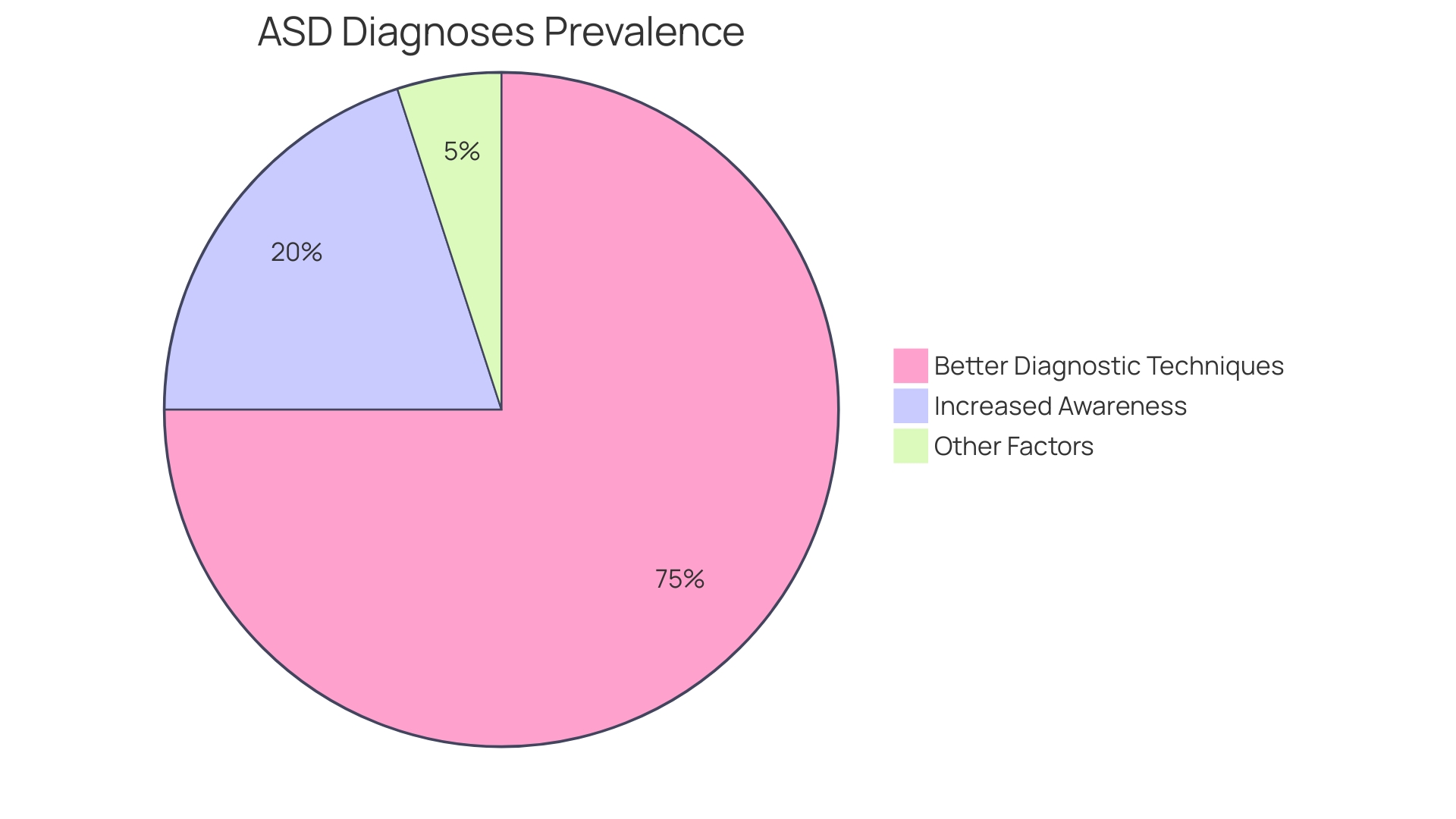
Key Principles of ABA
At the center of Applied Behavior Analysis (ABA) therapy lies a collection of core principles designed to improve behavioral skills in people with autism and ADHD. The technique of reinforcement is pivotal, essentially rewarding positive behavior to encourage its recurrence. Prompting comes into play as a means to signal or assist the person in executing a desired action. Meanwhile, shaping takes a more granular approach, deconstructing complex actions into smaller, manageable tasks, and providing positive reinforcement at each incremental stage. As individuals gain mastery, fading plays its role by progressively reducing the amount of guidance or cues, fostering self-sufficiency in the learned behaviors.
Given the diverse spectrum of autism spectrum disorders, as highlighted by Dr. Jan Blacher, a research professor at UC Riverside, it's crucial to tailor ABA interventions to the varying capabilities and needs of each child. With the recent update to the ABA Practice Guidelines by the Council of Autism Service Providers, practitioners are equipped with the latest standards to ensure high-quality, personalized treatment. These guidelines emphasize the significance of implementing ABA treatment with the utmost caution to achieve its complete effectiveness.
As the prevalence of this developmental disorder has escalated – now affecting 1 in 36 children, compared to 1 in 2,500 a few decades ago – the need for robust and adaptable interventions has never been more apparent. The structured yet flexible framework of ABA intervention is well-suited to address such needs, supporting the development of communication, social skills, and adaptive behaviors across the spectrum of individuals with autism.
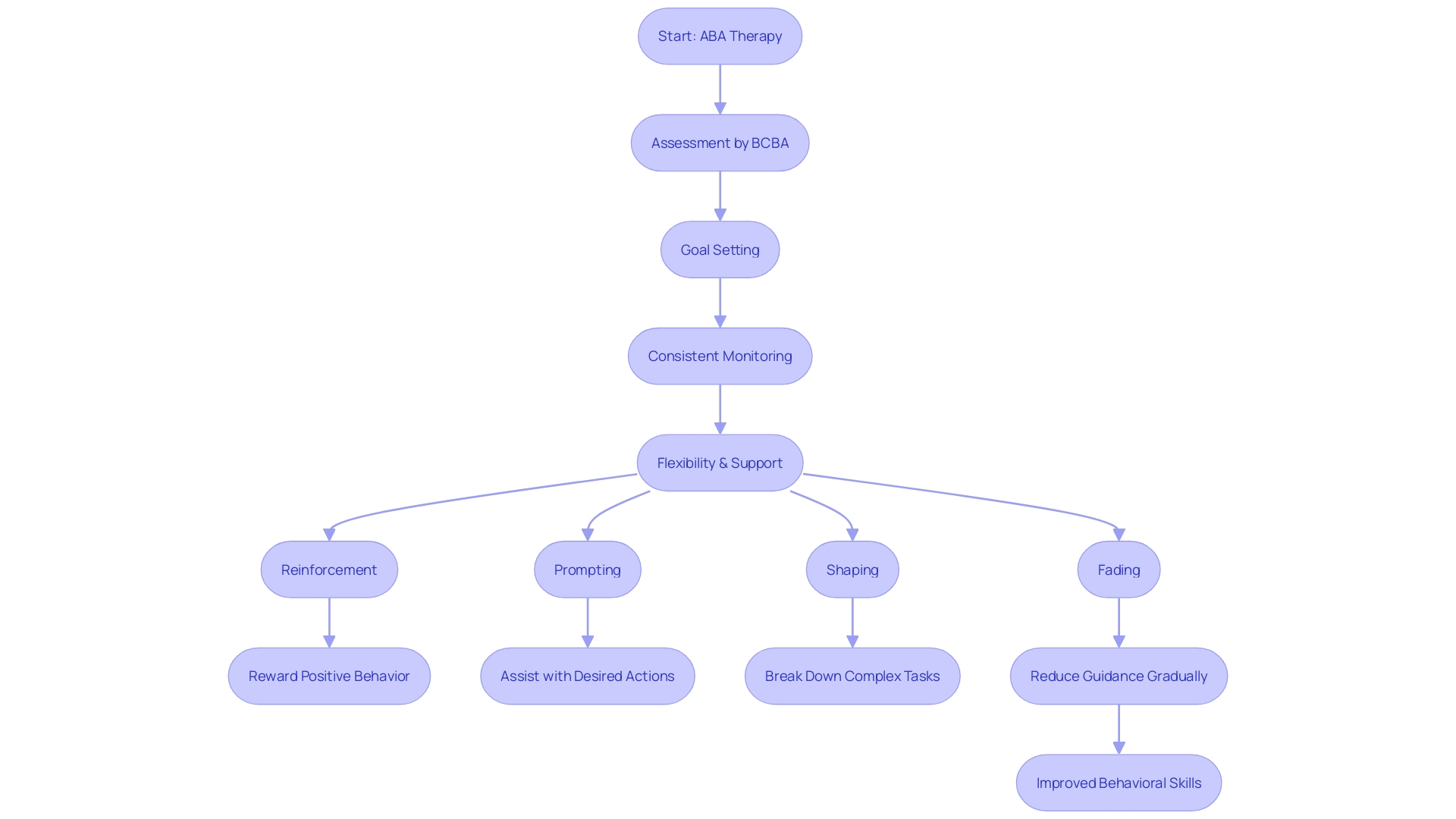
The A-B-Cs of Behavior Analysis
Applied Behavior Analysis (ABA) therapy is a dynamic and individualized approach to improving social, communication, and learning skills through positive reinforcement. At the core of ABA are the ABCs: Antecedents, Behaviors, and Consequences. Antecedents are the precursors that trigger a behavior, while the behavior is the action taken in response to the antecedent. Consequences are the results that follow the behavior, shaping its likelihood of recurrence. The intricate relationship between these components allows behavior analysts to tailor interventions that encourage beneficial behaviors and minimize challenging ones.
With the recognition that each person with autism is unique, the ABA framework is adaptable, taking into account the varying abilities and needs that come with the spectrum of autism conditions. According to Dr. Jan Blacher's delineation, the spectrum has broadened from those with significant impairments to encompass people with exceptional cognitive abilities, requiring nuanced and flexible ABA strategies. Furthermore, the social model of disability encourages us to reflect on disability as a cultural and social construct, emphasizing the importance of including individuals with disabilities as co-creators in the development of interventions.
The Council of Autism Service Providers recently updated the ABA Practice Guidelines, highlighting the effectiveness of the treatment when implemented with the highest quality. This reflects an industry-wide commitment to excellence and adaptation in response to evolving needs, such as those highlighted by Doreen Granpeesheh, who advocates for flexible work models to attract skilled ABA professionals. By embracing the principles of neurodiversity and the social model of disability, ABA practitioners are better equipped to support the diverse community with neurological differences, advocating for their rights and contributing to a more inclusive society.
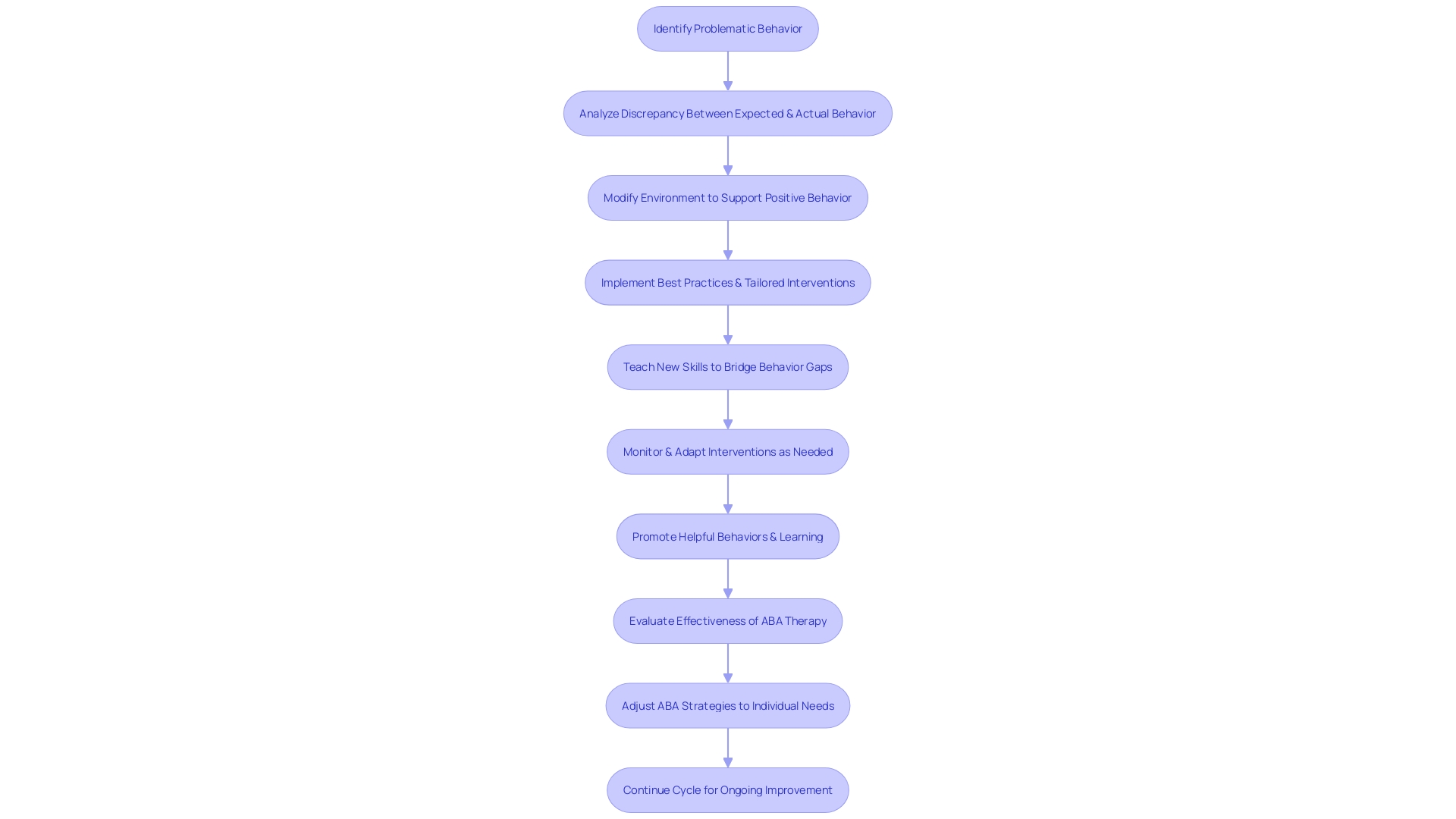
Positive Reinforcement in ABA
Applied Behavior Analysis (ABA) is a powerful strategy for enhancing the lives of individuals with autism spectrum disorder and attention deficit hyperactivity disorder (ADHD). At its core, ABA harnesses the power of positive reinforcement to shape and reinforce desirable behaviors, offering immediate and appropriate rewards for each step in the right direction. These rewards can be as simple as verbal affirmation or as tangible as a favorite toy or activity, tailored to resonate with the person's personal preferences.
The TACA prioritizes comprehending the intricacies of individuals with autism and choosing interventions that are in line with the distinct requirements of each person. Dr. Jan Blacher's observation of the evolving definition of autism underscores the necessity for adaptable therapeutic approaches that cater to a broad spectrum of abilities.
Furthermore, the newly revised ABA Practice Guidelines from the Council of Autism Service Providers emphasize the importance of high-quality implementation of ABA treatment, ensuring that it is effective and meets the diverse needs of individuals on the autism spectrum. The guidelines serve as a beacon for maintaining standards of care, offering assurance to parents and professionals that the interventions provided are grounded in the latest research and best practices.
Mary Barbera's weekly discussions on addressing common parenting challenges further demonstrate the versatility of ABA treatment, from enhancing communication to dealing with behavioral issues. Her 4-step approach provides actionable insights for both parents and professionals, reinforcing the value of early intervention and specialized interventions like ABA.
As the field of autism intervention continues to evolve, ABA therapy remains a cornerstone, adapting to the individualized requirements of each person and fostering a supportive environment where positive behaviors can thrive.
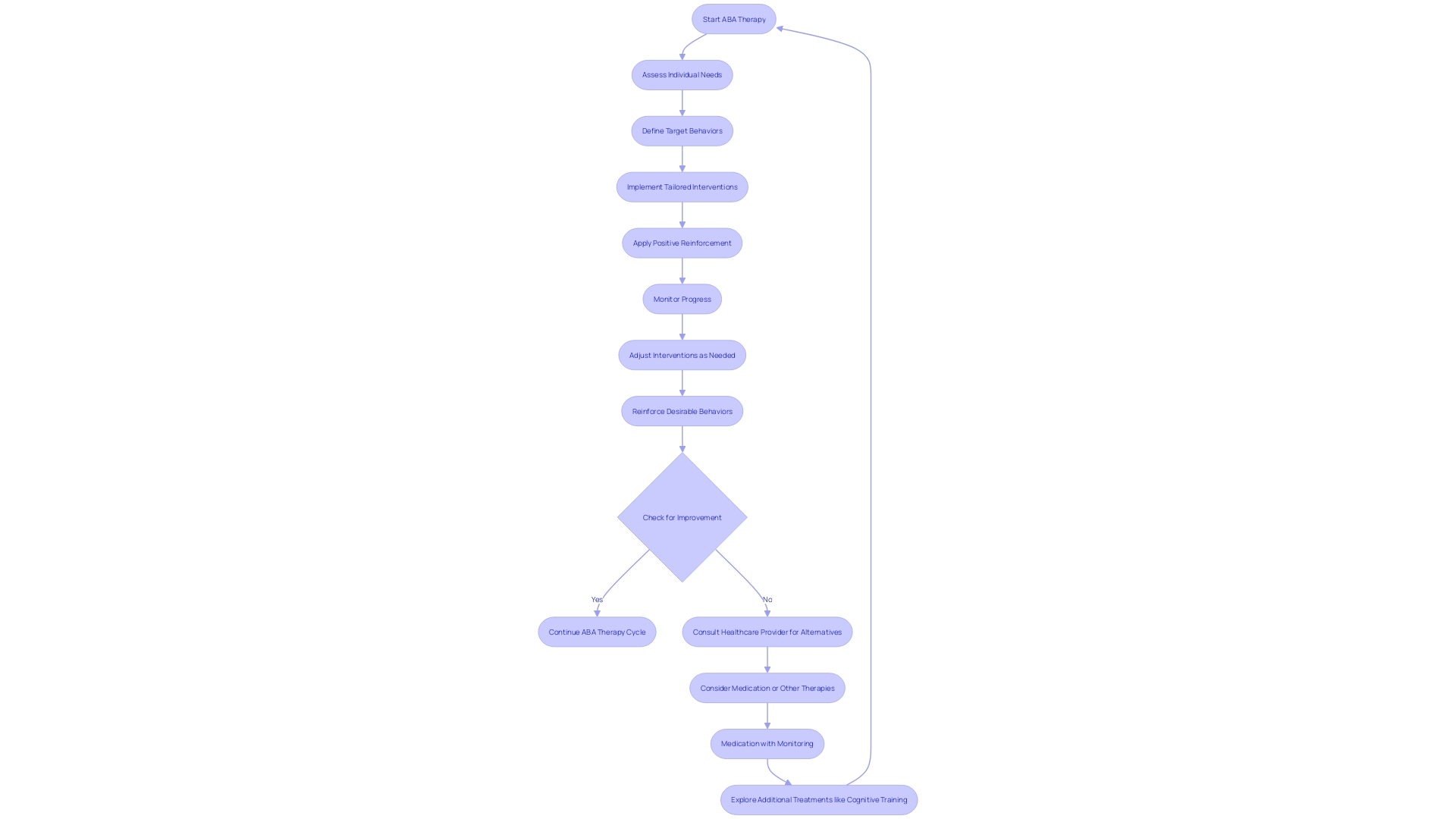
ABA Techniques and Strategies
Applied Behavior Analysis (ABA) is a versatile approach that utilizes different methods to promote favorable behavior and skill enhancement in people with autism and ADHD. Key strategies include:
- Discrete Trial Training (DTT): This technique involves decomposing skills into manageable steps and providing ample opportunities for practice and reinforcement. Naturalistic Teaching Strategies (NTS): These strategies emphasize skill acquisition within the person's everyday environment, leveraging their interests to foster learning.
- Functional Communication Training (FCT): FCT is designed to teach alternative, constructive communication skills to replace problematic behaviors.
- Social Skills Training: This component of ABA focuses on assisting people in improving their abilities to engage socially.
Recent advancements in ABA intervention emphasize the significance of personalized and excellent execution, as emphasized by The Council of Autism Service Providers' new ABA Practice Guidelines. These guidelines aim to ensure that ABA treatment is adapted to the unique needs of each individual, as the spectrum of developmental disorder is broad and diverse. Dr. Jan Blacher, a research professor, has observed a significant shift in the comprehension of the condition, with current interventions accommodating a wide array of capabilities and challenges.
Moreover, the relationship between therapists, families, and healthcare providers is pivotal. Building trust through clear communication and active listening is essential to form effective partnerships for the child's best interest. It's also crucial for ABA professionals to consider the cultural and contextual factors that influence the families they work with.
In the constantly changing realm of ABA treatment, service providers work hard to draw in and keep qualified professionals like Registered Behavior Technicians (RBTs) and Board Certified Behavior Analysts (BCBAs) by providing adaptable work structures and addressing the needs of the workforce.
As we keep advancing our comprehension of autism and enhancing our remedial methodologies, ABA treatment persists as a foundation, with a dedication to delivering personalized, top-notch care to every person.
Assessment and Treatment Planning in ABA
A central aspect of Applied Behavior Analysis (ABA) therapy is the meticulous process of assessment and individualized treatment planning. During the assessment phase, a multi-faceted evaluation is conducted to comprehend the person's distinct abilities, challenges, and preferences. The utilization of various evaluation instruments and methods is crucial for obtaining a complete profile of the person. Following the assessment, a tailored treatment plan is crafted, outlining precise goals and objectives. This plan is a strategic blueprint, detailing the interventions and methods to be utilized in pursuit of enhancing one's skill set and fostering positive behavioral growth.
Recent progress in the field has emphasized the significance of incorporating the social model of disability into ABA treatment. This model emphasizes the role of societal structures and cultural norms in defining disability, rather than solely focusing on the individual's impairments. It promotes a more comprehensive approach to treatment, one that acknowledges disability as a facet of identity and a result of social constructs. The newly updated ABA Practice Guidelines, released by the Council of Autism Service Providers, reflect this contemporary understanding. These guidelines aim to ensure high-quality implementation of ABA interventions, respecting the diversity and individuality of those on the spectrum of autism.
Research has revealed that a significant portion of non pharmacological intervention studies for autistic children and youth possess design flaws, challenging the reliability of their findings. This highlights the necessity for ABA practitioners to critically evaluate the research informing their practice. The recent guidelines also address these concerns, promoting an evidence-based approach that respects the rights and dignity of individuals with autism spectrum disorder. By incorporating feedback from the community affected by autism and aligning with principles of social justice, ABA therapy continues to evolve, ensuring that every person receives the highest standard of care tailored to their unique context.
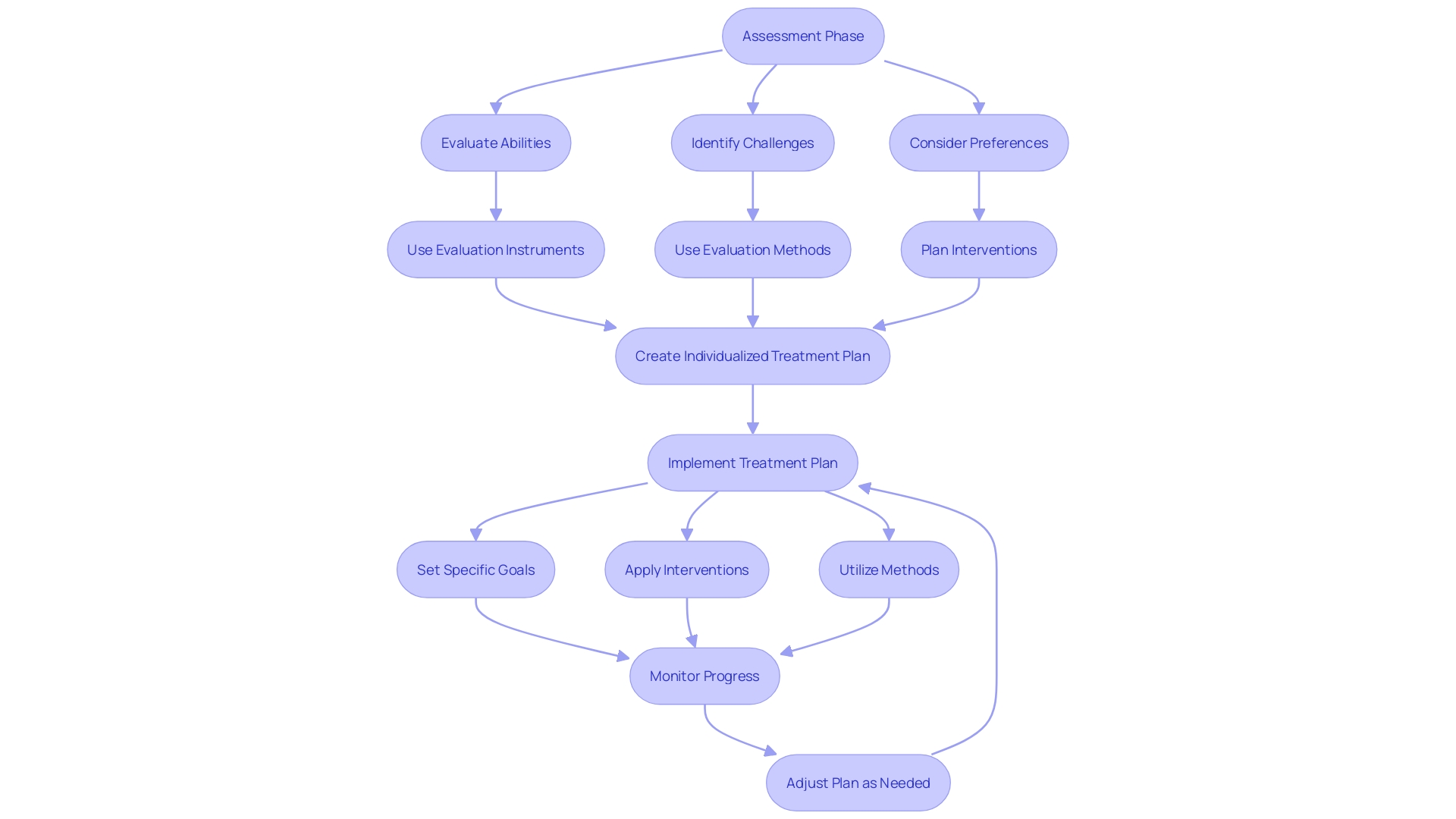
Ethical Considerations in ABA Practice
Adhering to ethical standards is integral to the practice of Applied Behavior Analysis (ABA) therapy. The newly updated ABA Practice Guidelines by the Council of Autism Service Providers emphasize the necessity for behavior analysts to conduct their work with the highest regard for ethical considerations to ensure they meet the evolving standards of care. Key aspects of these ethical standards include safeguarding client confidentiality, securing informed consent, ensuring the competency of supervision provided, and navigating potential conflicts of interest with transparency and integrity. When considering the diverse needs of individuals with autism spectrum disorder, informed by the social and cultural models of disability, it is evident that ethical practice in ABA is not just about adherence to a set of rules but about respecting the individuality and rights of each client. This regard for the personhood of clients with ASD corresponds to the social model of disability's perspective that disability arises from societal limitations rather than solely a person's impairment. Behavior analysts are encouraged to consider these models as they customize their practices to support autistic people, acknowledging that disability is a minority identity that intersects with broader social justice issues. With the rise in autism diagnosis, currently affecting 1 in 36 individuals, and the acknowledgement that the presentation of autism is diverse, it is more important than ever to prioritize high-quality and ethical ABA practice. It is essential for those seeking ABA services, including parents and professionals, to collaborate with behavior analysts who prioritize these ethical principles, ensuring practices that are not only effective but also advocate for the rights and well-being of those they serve.
Generalization and Maintenance of Behaviors
ABA therapy, a cornerstone of support for people with autism, emphasizes two critical outcomes: generalization and maintenance. Generalization, the transfer of learned behaviors to new environments, people, and situations, is vital for fostering independence and real-world success. Maintenance ensures these skills persist over time. In order to accomplish these objectives, behavior analysts employ a range of approaches, such as instructing in different environments, utilizing varied resources and people, and scheduling regular practice and review.
For instance, the updated ABA Practice Guidelines by the Council of Autism Service Providers stress the importance of high-quality implementation, a factor that is crucial for promoting generalization and maintenance. The guidelines serve as a reference point for guaranteeing that ABA treatment remains effective and advantageous for people on the spectrum.
Recent shifts in the identification and understanding of autism spectrum disorder underscore the evolving nature of ABA practices. A growing awareness of the spectrum and its diversity requires flexible approaches to therapy, reflecting the unique needs of each individual. The social model of disability encourages viewing disability through a socio-cultural lens, which can lead to more personalized and culturally sensitive ABA interventions.
The changing landscape of the diagnosis and intervention for individuals with autism, where early signs and symptoms are being more accurately identified, also plays a role in tailoring ABA strategies. As the biology of a certain developmental disorder is progressively unraveled, targeted interventions and societal accommodations become more refined, enhancing the potential for generalization and maintenance of skills.
In brief, implementing ABA intervention with an emphasis on generalization and maintenance is not only about employing a collection of methods; it involves adjusting to the requirements and circumstances of individuals with ASD to optimize their long-term achievements and self-reliance.

Common Applications of ABA
ABA, short for Applied Behavior Analysis, is a versatile intervention not limited to just autism and ADHD. It's an adaptable approach that caters to diverse behavioral challenges across populations, including those with intellectual disabilities, language delays, and behavior disorders. This approach is based on the science of behavior, aiming to comprehend and alter intricate human actions in a meaningful manner. By promoting the development of new skills, improving performance, and reducing challenging behaviors, ABA intervention can be customized to assist individuals of any age, with or without disabilities.
The adaptability of this treatment extends to various environments such as schools, homes, and communities, where it can be implemented to nurture skill development, curb problematic behaviors, and elevate life quality. ABA's efficacy is underscored by a commitment to ethical principles and the utilization of evidence-based practices. This involves conducting thorough behavioral assessments, crafting personalized therapy plans, and employing data to monitor progression.
The recent shifts in the understanding of autism, where diagnoses have significantly increased from 1 in 2,500 to 1 in 36 individuals, emphasize the importance of ABA's flexibility. The evolving landscape of autism has introduced cases with a spectrum of intellectual abilities and adaptive skills, necessitating interventions like ABA that can be customized for each person's needs. This understanding is especially important as it influences how treatment is designed and provided across different demographics, allowing for a more detailed and considerate approach to behavioral interventions.
Benefits and Limitations of ABA Therapy
Applied Behavior Analysis (ABA) is customized to improve the skills and development of individuals with autism and ADHD. Notably, pediatric occupational therapist Kara from Florida has seen firsthand how ABA, coupled with occupational interventions, can foster self-reliance in autistic children. These interventions can greatly enhance a child's capacity to communicate, interact socially, and excel academically and in everyday activities. Furthermore, they offer parents and professionals practical methods to address challenging behaviors, thereby nurturing an individual's progress.
The recent overhaul of ABA treatment guidelines by the Council of Autism Service Providers marks a pivotal advancement, emphasizing the necessity for high-quality, correctly executed intervention. The updated third edition of the ABA Practice Guidelines for the Treatment of Autism Spectrum Disorder serves as a beacon for optimal care standards. As Lorri Unumb, CEO of CASP, articulates, 'ABA is a highly effective treatment for individuals with autism spectrum disorder.'. But it has to be correctly implemented at the highest quality."
Nevertheless, ABA treatment is not a one-size-fits-all answer. It is crucial to undertake a comprehensive evaluation by a Board Certified Behavior Analyst (BCBA) to establish tailored goals. The child's progress must be meticulously tracked, with strategies refined to ensure continual improvement. Flexibility remains central to effectively support diverse family needs and schedules.
The significance of ABA therapy is further underscored by the escalating rates of autism spectrum disorder diagnosis, with Dr. Jan Blacher noting a shift from 1 in 2,500 individuals to 1 in 36 today. This increase is credited to a deeper comprehension of the spectrum nature, which requires nuanced approaches to intervention. As research progresses, it is clear that while some studies reveal design flaws, the imperative for quality intervention research that respects the unique needs of individuals with autism is paramount.
Conclusion
In conclusion, ABA therapy is a dynamic and individualized approach that improves social, communication, and learning skills through positive reinforcement. It shapes positive behaviors and reduces undesirable ones, providing a structured method to address common parenting challenges. ABA therapy reflects a personalized and culturally sensitive approach, ensuring the well-being of individuals with autism and related disorders.
The key principles of ABA therapy, such as reinforcement, prompting, shaping, and fading, enhance behavioral skills in individuals with autism and ADHD. Combined with the recent update to the ABA Practice Guidelines, practitioners can provide high-quality and personalized treatment.
Positive reinforcement plays a crucial role in ABA therapy, shaping and reinforcing desirable behaviors. The therapy's versatility is demonstrated in its ability to tackle common parenting challenges and address various aspects of development.
ABA therapy employs different techniques and strategies, such as Discrete Trial Training, Naturalistic Teaching Strategies, Functional Communication Training, and Social Skills Training, to encourage positive behavior and skill development.
Assessment and treatment planning are central to ABA therapy, ensuring interventions are tailored to each individual's unique needs. The integration of the social model of disability into ABA therapy reflects a holistic approach that recognizes disability as a facet of identity shaped by social constructs.
Generalization and maintenance are essential outcomes of ABA therapy, promoting independence and long-term success. The therapy's adaptability and effectiveness are shaped by the evolving understanding of autism and the importance of cultural and individual contexts.
ABA therapy is a versatile and adaptable approach that can be customized to support individuals of any age, with or without disabilities. As the prevalence of autism continues to rise, ABA therapy remains a cornerstone, adapting to the evolving needs of the autism community. It continues to make a difference in the lives of individuals with autism and related disorders.




